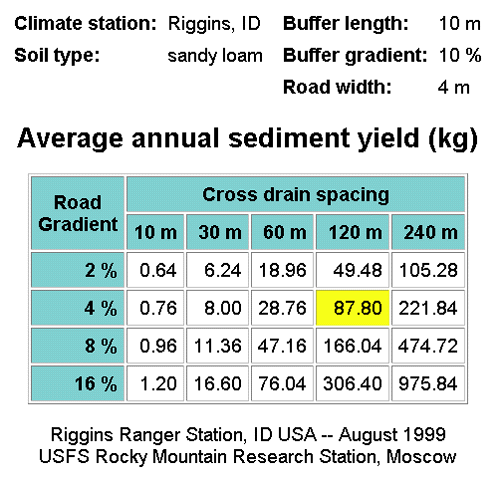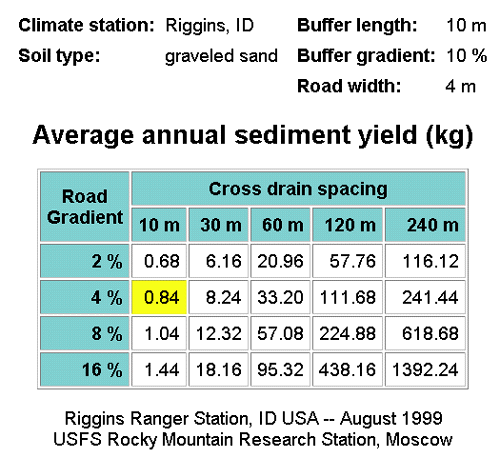
Q A native surface road is located about 10 m from the sensitive Salmon River in central Idaho. The buffer gradient is 10 percent, and the road is 4 m wide, insloped with a 4 percent gradient. The vegetated ditch is stable, and the soil is a sandy loam. Current cross drain spacing is about 120 m. The best climate is Riggins, ID.
What will be the reduction in sediment delivery by graveling a 120-m section of this road?
A If the road has no gravel, the road will likely be rutted, and the cross drain spacing will be 120 m. Because the ditch is stable, only the road traveled way will be eroding, so the width is 4 m. The estimated sediment yield is 88 kg of sediment.

If the road is graveled, the flow path is reduced to 10 m, so the road is modeled by 10 m cross drain spacings. The estimated sediment yield is 0.84 kg from 10 m, or 0.84 x 120/10 = 10 kg from 120 m of road.

The benefit of adding gravel to this section of road is a reduction in sediment delivery of (88 - 11)/88=88 percent.